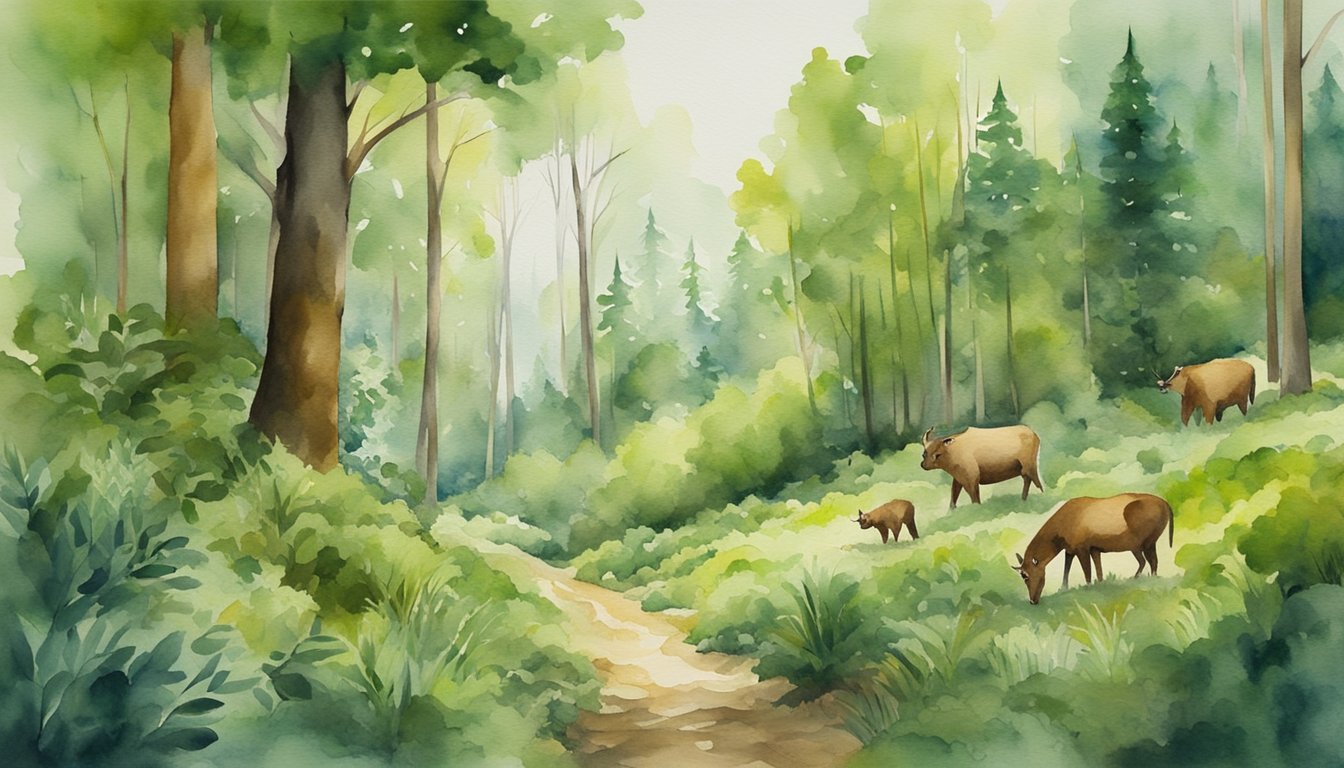Amazon Rainforest Ecosystem
The Amazon Rainforest is a cradle of biodiversity and plays a crucial role in the global water cycle and climate regulation. The delicate balance within this ecosystem is sustained by its diverse flora and fauna, intricate climate patterns, and a vast river system.
Flora and Fauna Diversity
The Amazon is often referred to as Earth’s largest living library, where every corner teems with life. Home to several million species, this tropical rainforest is rich with biodiversity. An astounding variety of trees, including the emergent, canopy, understory, and forest floor layers, make up the forest structure. Iconic wildlife such as the jaguar, tapir, and poison dart frogs, as well as countless species of monkeys, rodents, and freshwater fish, inhabit these woods. The Amazon also serves as a vital habitat for one in ten known species in the world, making it an unparalleled hub of wildlife.
Geographic Features and Climate
Encompassing much of the South American continent, the Amazon Rainforest covers the Amazon Basin, which is bounded by the Andes Mountains to the west and drains into the Atlantic Ocean. The vast canopy of the rainforest influences the regional climate by releasing water vapor that helps form clouds, contributing to consistent rainfall. The average temperatures typically remain around 25 degrees Celsius year-round, fostering an environment suitable for the thriving tropical ecosystem.
The Water Cycle and River System
The Amazon River, known to be one of the longest rivers in the world, is the main artery of the massive Amazon River Basin. Its extensive network of tributaries and rivers plays a critical role in the global water cycle, discharging vast amounts of freshwater into the Atlantic Ocean every day. This intricate river system not only sustains life within the forest but also impacts oceanic salinity and the carbon cycle. A significant amount of the planet’s carbon dioxide is processed by the Amazon, emphasizing its fundamental role in mitigating climate change.
Conservation and Threats

The Amazon Rainforest is facing significant challenges due to deforestation and climate change, yet ongoing conservation efforts highlight the region’s ecological importance. These efforts are crucial for the survival of countless species and help maintain global climate stability.
Deforestation and Climate Impact
Deforestation in the Amazon is driven by various factors, including agricultural expansion, logging, mining, and fires, which are often set intentionally to clear land for crops or pasture. The forest’s destruction leads to a loss of biodiversity, including numerous plant and animal species that are found nowhere else on the planet. Climate change exacerbates these impacts, as the Amazon, which plays a critical role in absorbing carbon dioxide, is less able to do so as its forest cover diminishes. The loss of forests in the Amazon not only releases significant amounts of greenhouse gases but also threatens the forest’s ability to generate its own rainfall patterns, pushing it toward a potential tipping point.
Preservation Efforts and Ecological Importance
Global and local efforts are underway to protect the Amazon and its unique ecosystem. Notably, the ARPA initiative (Amazon Region Protected Areas) represents a historic conservation project aimed at safeguarding a vast portion of the rainforest. Designated national parks and protected areas serve as sanctuaries for wildlife and help maintain ecological functions vital to the global climate. These efforts are essential in preserving the region’s rich biodiversity, including thousands of animal species, and maintaining the vast carbon sink that helps to mitigate global climate change. WWF and other organizations are actively involved in numerous projects promoting sustainable development and enforcing conservation goals through sustainable practices.
Human Influence and Future Challenges
The Amazon spans across several South American countries including Brazil, Peru, Ecuador, Colombia, Bolivia, Guyana, Suriname, French Guiana, and Venezuela, all grappling with balancing economic development and environmental preservation. Populations, including numerous indigenous peoples with a history deeply connected to the land, are affected by government policies and corporate actions that influence the Amazon. Political figures such as Brazil’s former president Jair Bolsonaro have faced criticism for policies that have increased deforestation rates. Meanwhile, corporations in industries such as soy production are also driving forest loss. While the need for economic development persists, the challenge remains to align these goals with environmental stewardship to ensure the longevity of the Amazon and its critical role in the South American continent and beyond.

